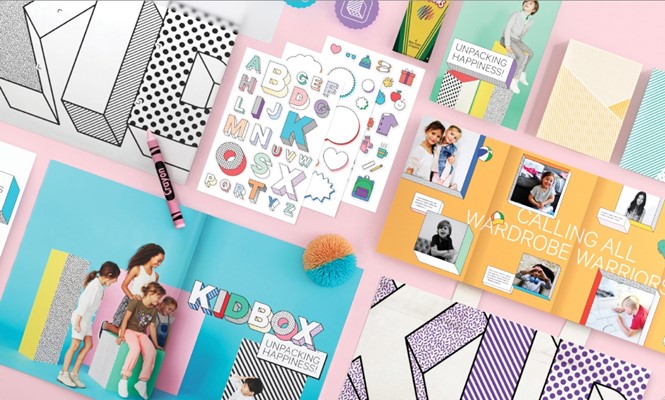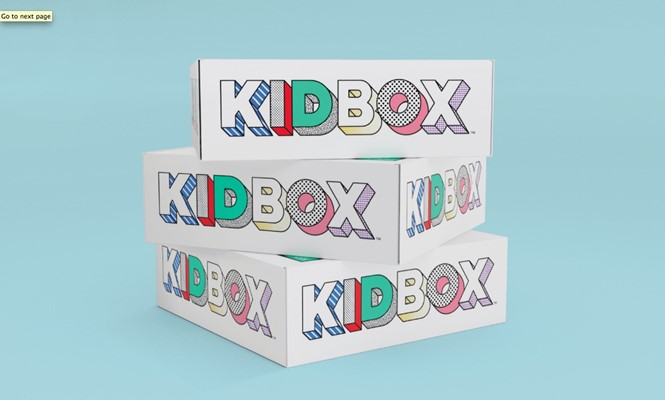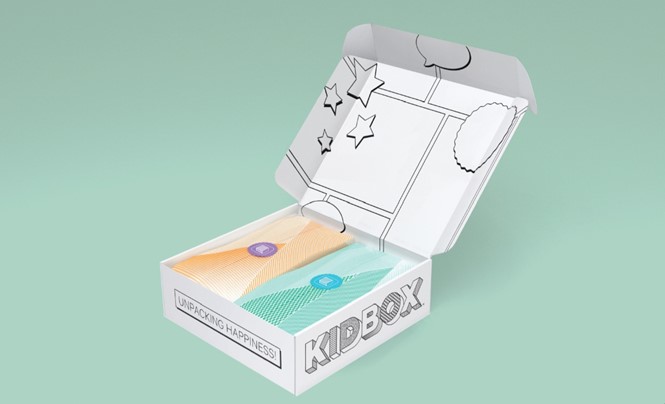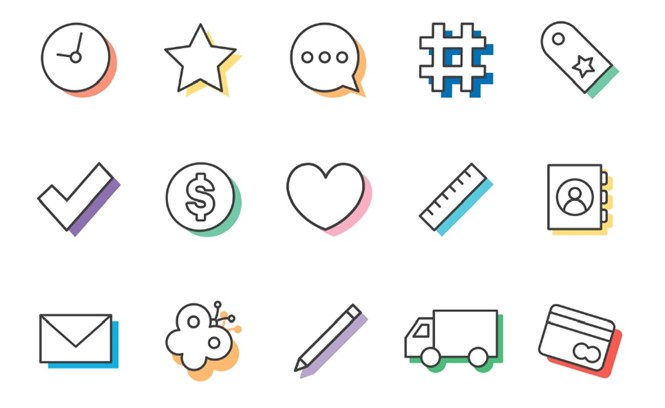Brand experience: Kidbox
With a novel approach to experiential packaging, Kidbox’s development has been geared around the interaction between the brand and its end users – parents and kids alike. Brittany Golob explores the brand
A kid gets a box in the post. It has a colourful logo on it, and black-and- white outlines. When the kid opens the box, it not only contains a season’s worth of new clothes, but a pencil case, crayons, stickers and a surprise toy. When the kid looks at the box, it’s apparent that the outlined images are meant to be coloured in and stickered and enjoyed.
That’s the experience Kidbox has designed. For the delivery box service, it’s not just about the savings parents can achieve on kids’ clothes, it’s about a joint experience for parent and kid alike. That experience, from website to service to logo to delivery and beyond, has been carefully crafted by the New York team of Base Design.
The brand agency worked with the startup – run by founder Haim Dabah and CEO Miki Berardelli – nearly from its inception in August last year. For six months, Base worked through the development of the brand and brand experience. Dabah is the man behind Gitano – a jeans brand that was sold to Fruit of the Loom – and was executive director of Li & Fung USA, now called Global Brands Group, which manages the likes of Juicy Couture, Frye and Spyder. His latest foray into fashion with Kidbox is designed to change the shopping experience for children’s clothes.
Berardelli says, “At every touchpoint, we communicate our key pillars of brand, value, convenience, fun, time together and giving back. We also listen closely to our customer and make sure she and her children are at the center of every decision we make about the business and the shopping experience.”
There are a number of subscription boxes that focus on kids clothes, particularly in the US. However, only one other, Kidpix, includes any kind of activities and all of Kidbox’s competitors come in plain brown cardboard boxes or plastic shipping bags. The basic format is similar across brands, parents can enter the kid’s details including age, weight and style preferences. They then get sent a box with a number of items, occasionally at
a discounted rate, and can then return, exchange or keep them. To differentiate itself among those compatriots, Kidbox had to look different, but it also had to have added value.
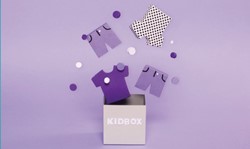
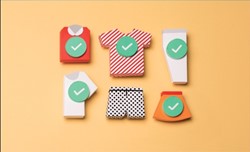

Geoff Cook, founding partner of Base Design New York, says his team worked to avoid the design clichés often used by brands geared toward children. “Most childrenswear companies use the same visual cues,” he says. “The language tends to be kind of cute and a little playful in a childish way.” For Kidbox, the branding was designed to appeal to children and their parents. It’s still colourful and playful, but with the added maturity that the Roy Lichtenstein-inspired brand brings. The logo is comprised of blocky, all-caps letters with crayon-like colour shades and different patterns and textures. Like Lichtenstein’s work, which is recognisable due to its consistent style, the Kidbox brand is not only unique, but it is flexible. The textured approach allows the brand to expand and grow as well as ensure that its brand touchpoints are instantly recognisable.
On the Kibox website, patterns are used across different graphics of kids clothes, they bring an animation about how Kidbox works to life, they inform the way the buttons on the site look and they allow a starting point for the company’s social media communications.
“We wanted the brand’s personality to be as strong as the functional aspect of shopping,” Cook says. “As you go through the site, you do feel that brand presence throughout.”
The website also features photography commissioned by Base that focus on the experience of the brand, from wearing the clothes to opening the box. As parents go through the site, the photography highlights the different styles and characteristics that they can select to represent their child. For the parent, the brand experience is primarily a digital one. Once they submit their kid’s preferences, the next interaction they may have with Kidbox is in returning or exchanging clothes they receive.
For the kid, however, the experience is primarily a physical one. And it’s all about the box. Berardelli says, “Unpacking a Kidbox is fun for the child and taps into their sense of play with sensory stimulation through color, materials, our branded box, crayons, stickers and a surprise gift. We are also hearing from our customers that because of the Kidbox shopping experience, parents are having conversations with their children about the importance of giving back much sooner in their life than would have happened otherwise. We find that extremely powerful.”
New clothes are exciting, but every other children’s clothing box delivers new clothes. Kidbox adds value through experience. Each box has the colourful logo splayed across the sides, but the top and inside of the box are white, with minimal black outlined drawings to encourage colouring. The box comes with stickers, a pencil case and a toy. “Opening the box was so much fun for my son,” one online reviewer writes. “The box itself has designs inside and is meant to be coloured. All these extras were a lot of fun!”
Cook says the element of surprise upon receiving and opening the Kidbox is the primary difference in the brand. It is meant to be interactive, he says. And, Base ensured the brand would avoid the more traditional ways of branding for kids including making things blue for boys or pink for girls. “We purposefully created the Kidbox language to be agnostic. It’s meant to appeal to any child,” he says.
The boxes, which are sent five times a year, come in either a 30cm x 30cm x 10cm size or a larger 40cm x 30cm x 10cm, giving crayon-armed kids more opportunities for creativity.
Cook says the experience is geared toward the reaction of both kids and parents upon opening a Kidbox. “We want parents and kids alike to feel joy when they open the box. The mother or father opens the box with the child and they’re getting these great clothes that are appropriate for their child. We’ve made the box interactive. That’s very new and very unusual for any company to think of its packaging in an interactive way that brings families together,” Cook says.
For parents, the experience continues one step further because, if a parent keeps all the items in the box, they receive a discounted rate, and an item of new clothing is donated to a child in need. This allows parents to educate their children about charitable giving. Families can choose where the donation will be made – via charity K.I.D.S./Fashion Delivers.
The brand development and unique approach to experiential packaging has paid off. In Kidbox’s first year of operation, its customer acquisition costs were 60% less than expected. The brand experience is not static either. Berardelli says there are plans to expand the brands and services on offer. Kidbox also has a new mobile app that will allow for a more customisable experience. The goal, she says, is to ensure the best possible personalised and relevant experience to parents and kids alike.

